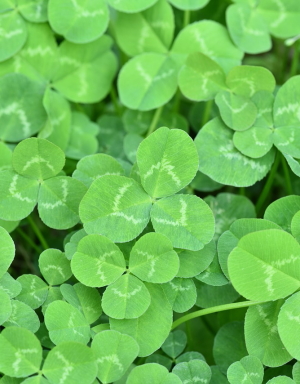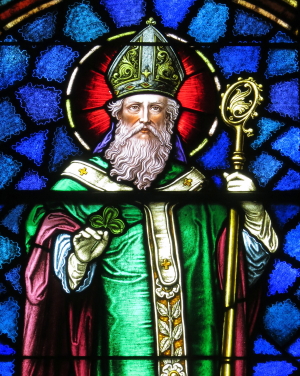
Kylemore Abbey, Ireland. Cook Irish food, read Irish books or watch movies about the Emerald Isle to celebrate St. Patrick’s Day this year. Photo courtesy of Pixabay
TUESDAY, MARCH 17: Cancellations of St. Patrick’s Day parades and events are occurring worldwide due to mandates for the novel coronavirus, but those hoping to honor St. Patrick don’t have to go out this year to do it: Recipes abound online (see links at the bottom of this post), and sources like USA Today are offering alternative activities (click here for a list of five popular Irish books). Forbes suggests six at-home ways to pay homage to Irish culture—”even without a parade.”
ST. PATRICK: FROM SLAVE TO SAINT
The legendary patron saint of Ireland began life c. 385 CE, in Roman Britain. With a wealthy family whose patron was a deacon, the young man who would become known as St. Patrick led a comfortable life until his teenage years, when he was kidnapped and taken as a slave to Gaelic Ireland. During his six years in Ireland, Patrick gained a deeper Christian faith. When he dreamed that God told him to flee to the coast, Patrick did so—and traveled home to become a priest. Following ordination, however, another dream prompted Patrick to do what no one expected: to return to Ireland.
As a Christian in Ireland, Patrick worked to convert the pagan Irish. With a three-leaved shamrock in hand to explain the Holy Trinity to the pagans, St. Patrick converted many. St. Patrick died on March 17, 461 at Downpatrick.
Surprisingly, the most widely known saint from Ireland was never formally canonized by the Catholic Church. Since no formal canonization process existed in the Church’s first millennium, St. Patrick was deemed a saint only by popular acclaim and local approval.
PATRICK’S ‘BREASTPLATE’
St. Pat’s Day may be a secular occasion in many communities, but it also has deep religious roots that matter to millions.
The purest forms of religious expression, each year, occur—naturally—in Ireland. One of the most popular posts in the decade-long history of ReadTheSpirit is a collection of three versions of the famous prayer known as The Breastplate:
Versions 1 and 2: Here is St. Patrick’s Breastplate in English prose and in 19th Century lines of a hymn.
Version 3: We also have St. Patrick’s Breastplate in Gaelic.
You probably remember some of the most famous lines from St. Patrick, such as:
God’s shield to protect me,
God’s host to save me
And also:
Christ with me, Christ before me, Christ behind me,
Christ in me, Christ beneath me, Christ above me.
But, there is so much more to this classic prayer!
Alternatively, start here for a Gaelic version and follow the link to find two more English versions, one as poetry and one as refashioned for a hymn.
Did you know? St. Patrick’s Day was made an official Christian feast day by the early 17th century, observed by the Catholic Church, Eastern Orthodox Christians, Lutherans and members of the Church of Ireland.
RECIPES, CRAFT IDEAS & MORE
Got dreams of hearty Irish stews, hot Reuben sandwiches and cold drinks? Get into the Irish spirit with these recipe ideas (and some crafts, too):
- For something delicious that isn’t just dyed green, cook up something hearty and delicious. The Washington Post has six authentically Irish recipes.
- A plethora of easy-to-follow recipes, from brisket to soda bread, is at AllRecipes.
- Cook up a meal like those of your favorite celebrity chefs, with recipes at Food Network.
- For both tasty recipes and elegant craft suggestions, check out Martha Stewart.
- Kids can get into the spirit of the Irish with craft ideas from Parenting.com.

